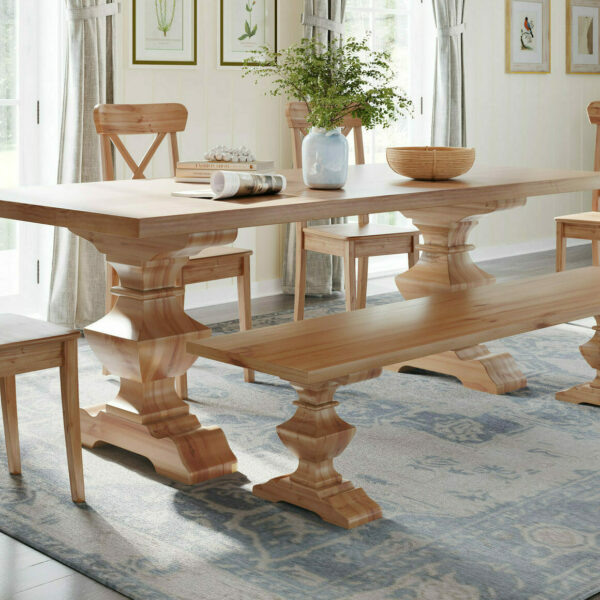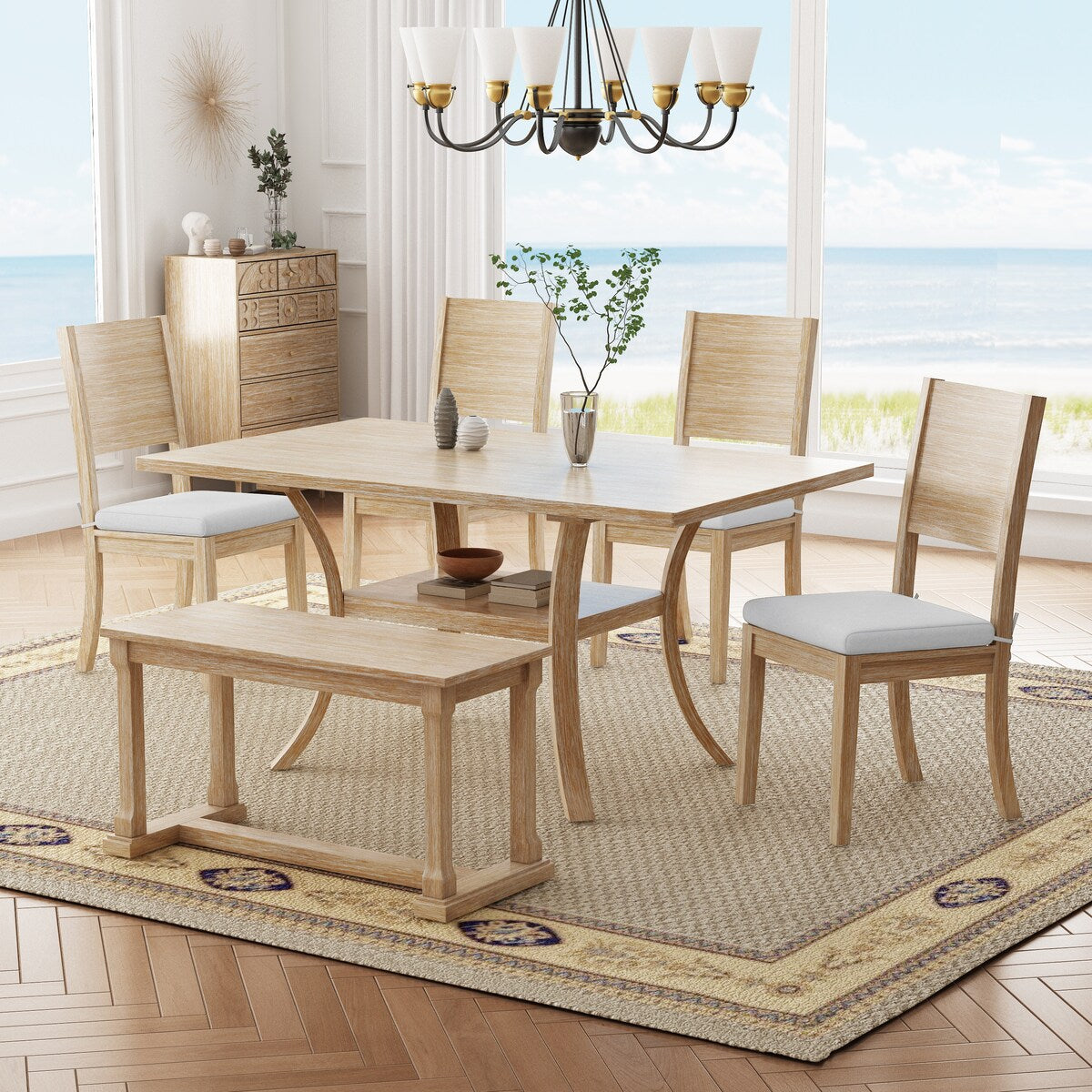How Dining Room Table Legs Can Change the Entire Aesthetic of Your Room
How Dining Room Table Legs Can Change the Entire Aesthetic of Your Room
Blog Article
From Standard to Modern: Locate the Ideal Dining Room Table Legs for Your Style
While classic designs such as cabriole and turned legs stimulate a sense of classic elegance, contemporary designs like barrette and geometric alternatives offer a chance for striking aesthetic interest. As you take into consideration these components, the concern remains: how can you seamlessly incorporate these varied leg designs to create an unified eating experience?
Understanding Table Leg Styles
The variety of dining room table leg designs can dramatically affect both the looks and functionality of the room. Each leg design contributes unique aesthetic aspects and functional features, satisfying varied style choices and usage requirements. Recognizing these designs is essential for choosing the best eating table that lines up with your general interior decoration vision.
For example, tapered legs offer a clean, traditional appearance that can boost a space's elegance, while stand bases provide stability and take full advantage of legroom, making them perfect for smaller sized rooms. Hairpin legs, a characteristic of mid-century modern style, introduce a commercial flair, allowing for a ventilated, open feeling. Trestle legs evoke rustic appeal, giving robust assistance and a feeling of eternity.
Additionally, the selection of materials plays a substantial role. Wood legs can bring heat and appearance, whereas metal alternatives frequently share a sleek, contemporary ambiance. Ultimately, understanding table leg styles is crucial for producing a cohesive dining area that shows individual design while ensuring practicality and comfort. By attentively considering these aspects, you can boost both the functional and visual allure of your eating space.
Conventional Table Leg Options
When picking eating room table legs, conventional alternatives frequently embody ageless elegance and craftsmanship. These designs reflect an abundant heritage and a commitment to quality, making them optimal for those that value traditional aesthetics.
One of the most famous typical leg designs is the cabriole leg, defined by its elegant curved shape. This layout typically features decorative carvings and is most frequently located in Queen Anne and Chippendale furniture. An additional prominent option is the turned leg, which flaunts a collection of smooth, rounded forms that provide a classic look while maintaining security.
In addition, the straight leg, while simple, supplies a sturdy and basic framework that can mix seamlessly with a variety of tabletop designs. For those attracted to ornate outlining, claw-and-ball feet legs stimulate a sense of splendour and can act as a stunning prime focus in any kind of eating space.
Last but not least, stand bases, although not strictly legs, give a different typical choice that enables adequate legroom and can be wonderfully carved. Each of these conventional leg designs adds to the general ambiance of a dining area, marrying function with visual charm.

Modern Table Leg Styles
Modern table leg styles use a diverse variety of styles that stress clean lines and cutting-edge materials. These layouts typically focus on performance while functioning as striking focal points within an eating room. Minimal visual appeals prevail, with legs crafted from products such as steel, glass, and engineered timber, which add to a airy and contemporary feel.
One popular style is the barrette leg, identified by its slim, conical structure that supplies security without overwhelming the table top (dining room table legs). This style is typically found in mid-century contemporary furniture and can effortlessly complement different eating table forms. Another fad is the use of geometric shapes, where legs might tackle asymmetrical or angular types, including aesthetic rate of interest and a touch of creativity

Mixing Designs for Special Spaces
Often, home owners look for to create one-of-a-kind dining spaces that mirror their personal design by mixing various layout elements. This technique enables for the incorporation of varied aesthetic appeals, resulting in an unified yet unique setting. For circumstances, coupling a rustic wooden table with sleek, modern steel legs can develop an attractive contrast that elevates the room's total appeal.
Additionally, incorporating vintage table legs with modern table tops can evoke a sense of history while maintaining a modern-day perceptiveness. Such combinations not just display private taste but likewise encourage creative thinking, allowing home owners to curate a space that really feels both individual and inviting.
Shade plays an essential function in this mixing process; choosing table legs that match or contrast with the existing shade Get More Information system can enhance visual rate of interest. Whitewashed legs can soften the boldness of a dark table surface, producing a balanced visual.
Tips for Selecting the Right Legs
Picking the right table legs is necessary for achieving both capability and aesthetic appeal in your dining space. Begin by taking into consideration the total design of your space. Standard settings gain from legs that include complex carvings my response or turned layouts, while contemporary rooms may ask for smooth, minimal styles.
Following, assess the elevation and stability of the legs. dining room table legs. Typical table vary between 28 to 30 inches in height, so make sure the legs enhance this measurement for comfort. In addition, robust materials, such as wood or steel, can boost security and long life
Review the leg form too-- options consist of straight, tapered, or pedestal layouts. Straight legs provide a traditional look, while conical legs can add a touch of beauty. Pedestal bases give ample legroom and are perfect for smaller sized rooms.
Verdict
In summary, selecting the optimal dining area table legs requires careful consideration of both traditional and modern-day styles. By integrating leg design, height, and product with the total decor, a cohesive and inviting ambience can be achieved.
The selection of dining area table leg styles can substantially influence both the aesthetic appeals and functionality of the room. Ultimately, recognizing table leg styles is essential for producing a cohesive dining area that shows individual design while guaranteeing practicality and comfort.One of the most renowned traditional leg designs is the cabriole leg, defined by its graceful rounded shape. Straight legs offer a timeless appearance, while conical legs can include a touch of beauty.In summary, picking the suitable eating area table legs needs careful factor to consider of both typical and contemporary styles.
Report this page